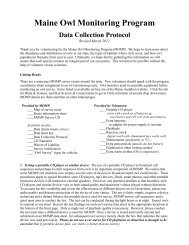Focus Species Forestry - Maine Audubon
Focus Species Forestry - Maine Audubon
Focus Species Forestry - Maine Audubon
Create successful ePaper yourself
Turn your PDF publications into a flip-book with our unique Google optimized e-Paper software.
• Is the surrounding landscape mostly large-intermediate and mature forest, and is it likely to<br />
stay that way for foreseeable future? If so, providing some young forest habitat will enhance<br />
habitat diversity at the landscape level. In contrast, if the surrounding landscape is in very<br />
young stands, the best course would be to maintain as much old forest as possible.<br />
• Does the ownership form part of a travel corridor in a developed or agricultural area?<br />
• Is the property part of a relatively large block of forest for the area?<br />
• Is the property adjacent to a special-value habitat, such as a deer wintering area?<br />
Answers to these and similar questions can help inform management decisions for the property.<br />
Set Development-Stage Goals for the Landscape<br />
To meet the needs of the full range of focus species, the landscape needs to provide adequate<br />
habitat for both early successional forest species (regeneration and sapling-small pole stages) and<br />
those that are characteristic of mature or late-successional stages. Refer to Table 2 for definitions<br />
of development stages. The following table can be used as a guide to setting landscape goals<br />
Landscape Goals for<br />
Stand Development Stages 1<br />
Landscape<br />
Development Stage<br />
Goal<br />
Regeneration, Saplings and Small 5-30%<br />
Poles<br />
Intermediate Varies 2<br />
Mature ≥ 20%<br />
Large-diameter mature stands (≥15 ≥ 10%<br />
in. dbh) and Late Successional<br />
1<br />
Adapted from DeGraaf et al. 1992, <strong>Maine</strong> Council on Sustainable Forest Management 1996, and draft<br />
recommendations of the <strong>Maine</strong> Forest Service Biodiversity Advisory Committee.<br />
2<br />
The percent of landscape in intermediate stands is determined by the percent in other development stages.<br />
Create a Diversity of Patch Sizes<br />
In most natural forest systems, including those found in <strong>Maine</strong>, small-scale openings caused by<br />
the death of individual or small groups of trees are much more common than large-scale standreplacing<br />
disturbances (Seymour et al. 2002). This natural disturbance pattern, which is prevalent<br />
in many forests, plus the fact that some species prefer a high level of interspersion in small<br />
patches while others prefer large patches of comparatively uniform habitat as discussed above,<br />
lead Hunter (1990) to propose the following rule of thumb:<br />
A useful corollary is:<br />
Harvest forest at a range of different scales and allocate approximately equal<br />
areas to different points along the continuum from small scale to large.<br />
Avoid uniformity of treatments, both within stands and across the property.<br />
<strong>Focus</strong> <strong>Species</strong> <strong>Forestry</strong> 67



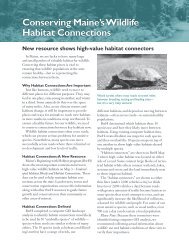
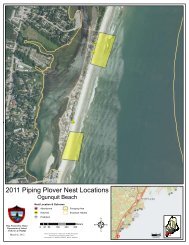
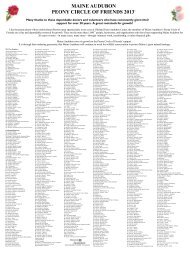
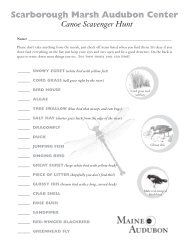


![2012 Loon Count Results [pdf] - Maine Audubon](https://img.yumpu.com/26228732/1/190x245/2012-loon-count-results-pdf-maine-audubon.jpg?quality=85)
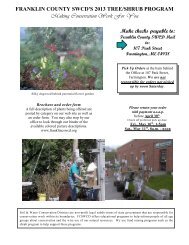
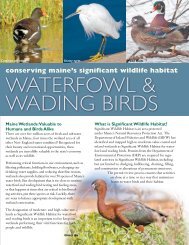
![Lake Fish of Maine (DIFW list) [pdf] - Maine Audubon](https://img.yumpu.com/23282964/1/190x245/lake-fish-of-maine-difw-list-pdf-maine-audubon.jpg?quality=85)
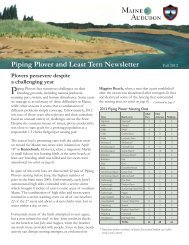

![The Maine Audubon Peony Circle of Friends 2012 [pdf]](https://img.yumpu.com/22707677/1/190x253/the-maine-audubon-peony-circle-of-friends-2012-pdf.jpg?quality=85)
